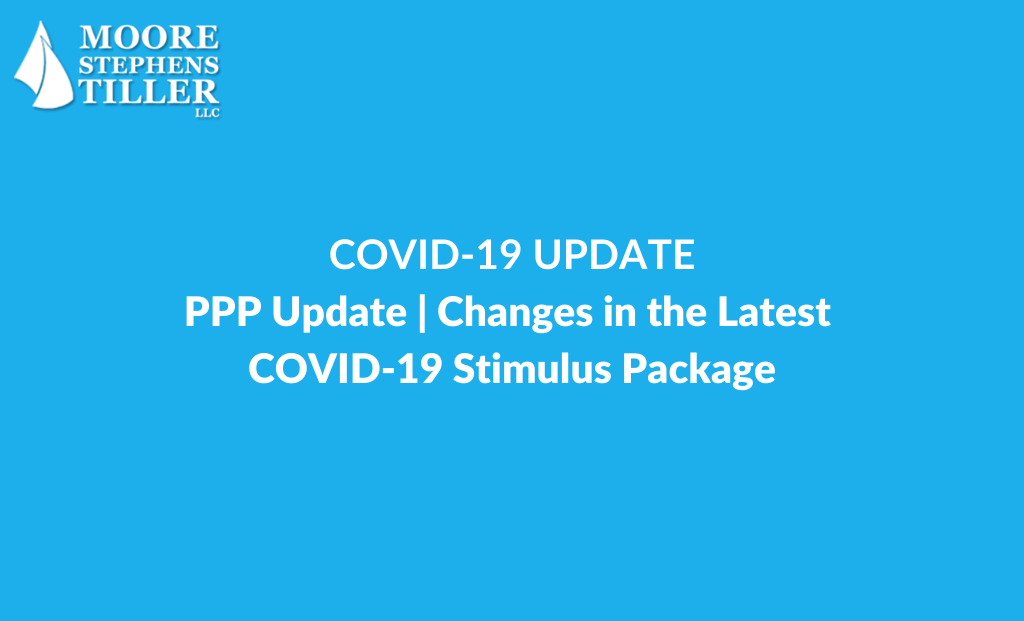
Congress has passed the Consolidated Appropriations Act 2021 which contains additional coronavirus aid for businesses and individuals. Now, the bill goes to President Trump to be signed into law. This update outlines key provisions within the legislation, focusing on significant changes to the Paycheck Protection Program (PPP). Here’s what you need to know.
PPP Expenses are Tax Deductible, Loan Forgiveness is Not Taxable
Business expenses paid with PPP loans are now tax deductible. This provision aligns with the congressional intent in the CARES Act and overturns the IRS Revenue Ruling from November 2020, which stated expenses were not tax deductible. For partnerships or S corporations, any amount excluded from income shall be treated as tax-exempt income. Additionally, tax basis and other attributes of the borrower’s assets will not be reduced. These provisions are retroactive to the date of enactment of the CARES Act (March 27, 2020).
There are more ways to use your PPP funds. Forgivable expenses now include:
- Operations expenditures – payments for any business software or cloud computing service that facilitates business operations, product or service delivery, the processing, payment or tracking of payroll expenses, human resources, sales and billing functions, or accounting or tracking of supplies, inventory, records, and expenses
- Property damage – costs related to property damage, vandalism, or looting due to public disturbances that occurred during 2020 that wasn’t covered by insurance or other compensation
- Supplier costs – payments made to a supplier for the supply of goods that are essential to the entity’s operations at the time the payment was made. The contract or purchase order must have been in effect before the loan’s covered period.
- Worker protections – operating or capital expenses made to comply with CDC, OSHA, Department of Health and Human Services’, or local or state requirements to maintain worker or customer safety related to COVID-19. Examples include the installation of drive-thru windows, air filtration systems, physical barriers such as sneeze guards, any health screening costs, and the expansion of additional indoor, outdoor, or combined business space.
The requirement to use 60% of the loan on payroll costs still applies.
Simplified forgiveness for PPP loans of $150,000 or less
The SBA must simplify the loan forgiveness process for borrowers who received PPP loans of $150,000 or less. The process should require borrowers to sign and submit a one-page certification form to their lender. The only information you’ll have to provide on this one-page form is:
- The number of employees you were able to retain because of the PPP loan
- The estimated amount of the loan you spent on payroll costs
- The total loan value
In addition, you must attest that you’ve accurately provided the required certification and complied with PPP loan requirements. After you submit the certification form, make sure to retain employment records for four years and other records for three years that prove your compliance. The SBA must create the certification form within 24 days of the Act’s passing.
Second draw loans for businesses facing severe revenue reductions
You can apply for a second PPP loan if you meet the following requirements:
- You employ no more than 300 employees
- You experienced at least a 25% reduction in gross receipts from one quarter in 2020 to the same quarter in 2019
The applicable quarters may change based on when you were in business. However, a 25% reduction in gross receipts from a quarter in 2020 compared to the same quarter in 2019 is a good rule of thumb.
If you apply for a PPP loan, your maximum loan amount will be 2.5 times your average monthly payroll costs in a year or $2 million. The maximum loan amount for NAICS 72 entities is 3.5 times your average monthly payroll costs in a year or $2 million.
Request an increase to your loan amount
If you applied for a loan but didn’t accept the full amount, you may ask to increase your loan amount to the maximum amount applicable. You can make this request even if you’ve received the initial loan amount or your lender has submitted a Form 1502 report to the SBA.
Select your covered period
Borrowers can select the end date of their covered period. It should fall between 8 and 24 weeks after the loan origination date.
Expanded eligibility
Certain 501(c)(6) organizations and destination marketing organizations that have 300 employees or fewer can now apply for a PPP loan. This includes chambers of commerce, economic development organizations, and tourism offices. News organizations and housing cooperatives can also apply for a PPP loan. Original program requirements and rules apply.
Generally speaking, lobbying organizations and organizations that spend more than 15% of its activities on lobbying efforts aren’t eligible for a loan. This bill prohibits recipients from using loan funds for lobbying activities.
Farmers & ranchers
There’s a new method for calculating your PPP loan if you’re a farmer or rancher. You can take your 2019 Schedule F gross income (capped at $100,000), divide it by 12, then multiply it by 2.5. Again, your maximum loan amount is limited to $2 million. If you received a PPP loan before this Act, you can ask your lender to recalculate your loan amount based on this formula. If this increases your loan amount, your lender can provide you with the difference.
Again, President Trump must sign this bill for it to become law. We’ll continue to update you as we learn more about the bill and any related guidance. As always, please reach out to us if you have any questions.
